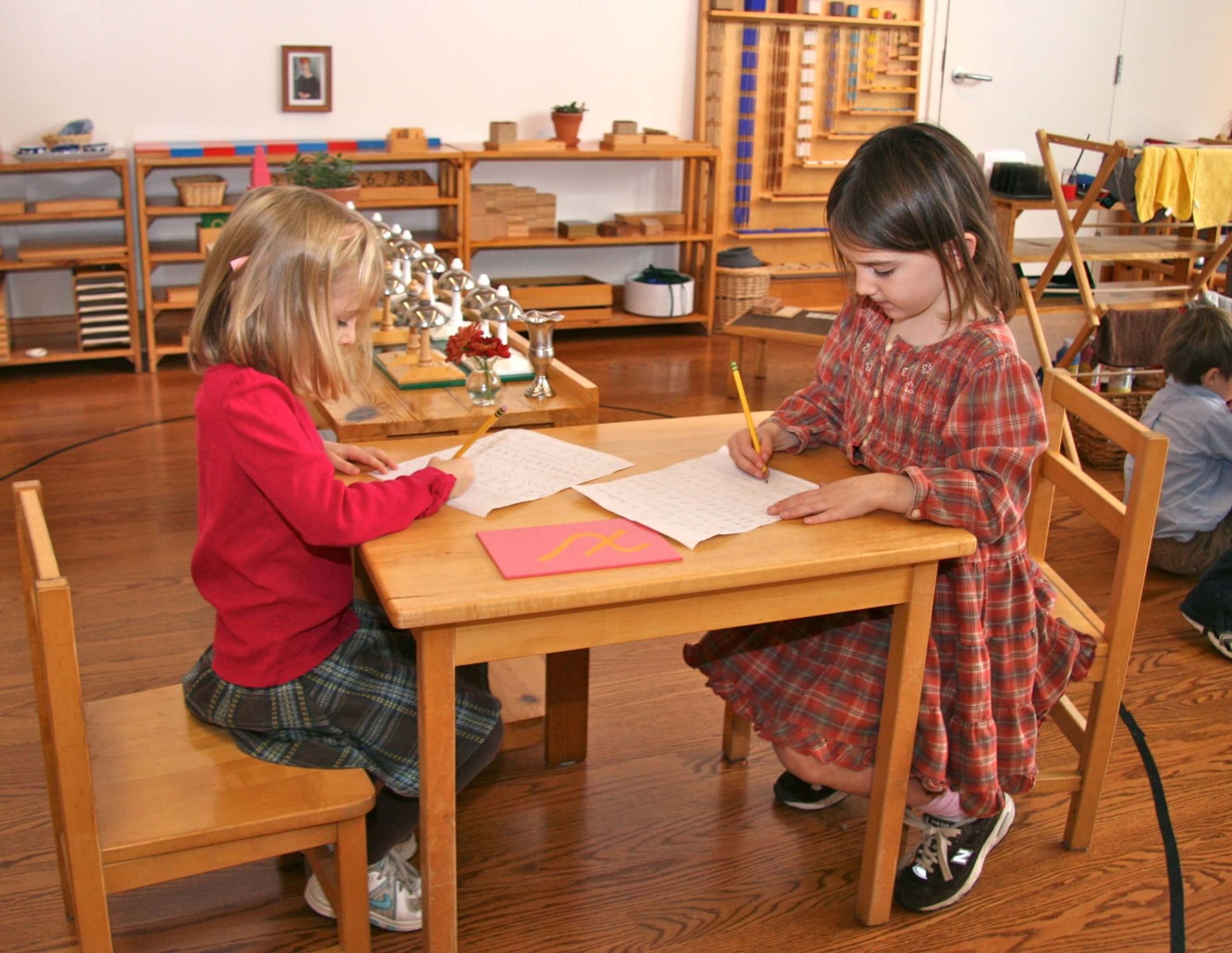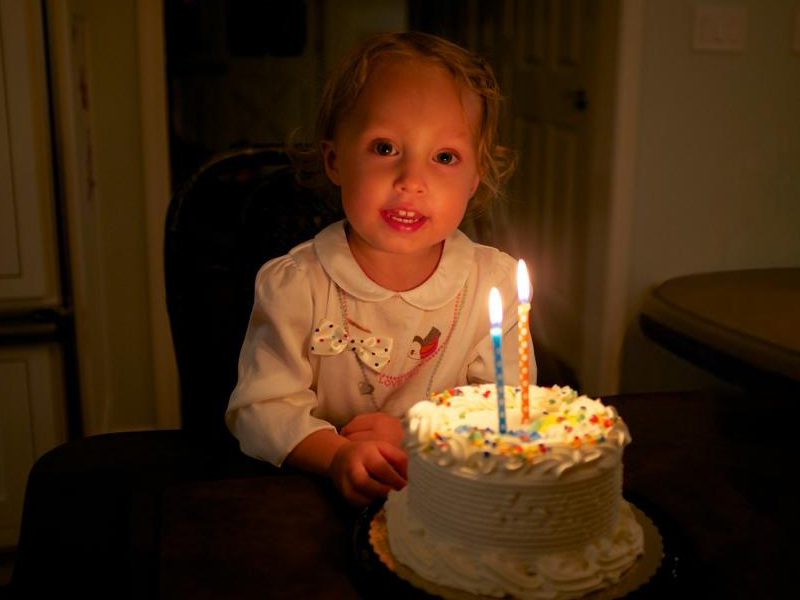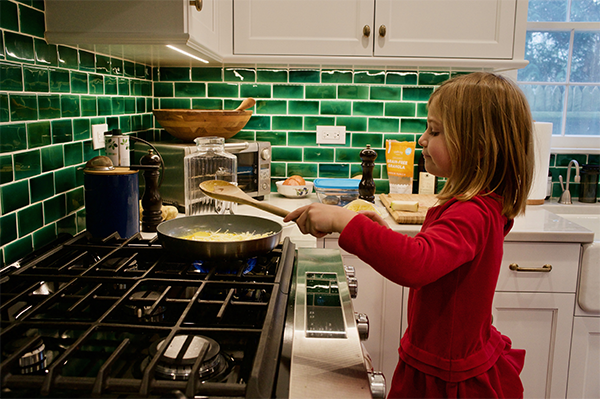
Children love family celebrations! Whether you celebrate Diwalli, Rosh Hashanah, Eid, or Christmas, our traditions and rituals are important ways that we pause to celebrate life. They are times to gather with others, share food, reflect with candlelight, perhaps sing or listen to music, dance, and tune in to our emotions. I say this last part because holiday family traditions, whether they be spiritual or not, evoke feelings of peace, joy, sorrow, memories, or some kind of emotion that can serve as a connection with others, with nature, with our creator or be a chance to check in with oneself as an individual. Involving our children of all ages in our holiday family traditions--or creating them anew as a family--is an important way to help our children create a sense of connection with others and meaning in their lives. These are opportunities to connect our children to all that is good in humanity.
Dr. Maria Montessori said: “That humanity which is revealed in all its intellectual splendor during the sweet and tender age of childhood should be respected with a kind of religious veneration. It is like the sun which appears at dawn or a flower just beginning to bloom. Education cannot be effective unless it helps a child to open up himself to life.”
Knowing that young children are absorbing the sounds, smells, sensations, and sights around them, we can joyfully surround them with the music, dancing, foods, and traditions of our celebrations. For older children, who are ready for a deeper understanding of symbolism, participating in creating the ceremonies of our holiday family traditions gives them a special role.
Music and Dancing in Holiday Family Traditions
Young children take great delight in dance, music, and special foods. When I took the Assistants to Infancy Montessori Training in Denver, our trainer had us walk to the park every Friday, spread out a big potluck lunch with ethnic foods we had made, and dance--yes, dance--a Greek dance as a group. We would inwardly groan as we were instructed to throw our arms over each other’s shoulders in a big circle; as the music on the recorder began, our group of 25 would begin the simple, graceful dance in the grass under the large oak trees. Within a few minutes, we would be smiling, laughing, comforted somehow by the familiarity and togetherness of the act.
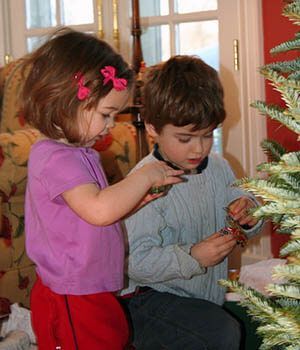
By the end of the two-summer course, I came to understand what our trainer wanted us to absorb: ritual celebrations with food, music, dancing, gathering with people, are important parts of being human that all cultures practice, so we need to welcome children to join in. Whatever traditions you choose for your family, be aware of how the youngest members of your family are absorbing the experiences and developing a deep love for them.
Candlelight in Holiday Family Traditions
When our son was three years old, the only time he saw our town after dark was the one night of the year he was kept up—Christmas Eve.
“Lights! Lights! Lights!” Stanley would shout, pointing at the Christmas decorations on so many of our neighborhood’s lawns, all the way home. It must have seemed so spectacular to him, as if the world was transformed for just that night, since he was fast asleep at dusk all the other evenings of the year.
It is a fond memory, one that still makes me smile. Our son’s wonder and delight was infectious. What is it about lights? I always loved seeing our Hindu neighbors’ front bushes strung with lights around late October or early November for Diwali, and enjoyed the beautiful Menorah candles in our hallway at school during Hanukah. Even putting a candle out on a table or standing around a campfire or a fireplace warms our souls, somehow.
Have you ever noticed that most of the major religions of the world celebrate with lights? In our Elementary Level classrooms, we marvel at such similarities between our religions, and we actively seek out how human beings celebrate all over the world with many things in common. Candlelight, chanting, dancing, singing, preparing and sharing food, and prayer: these rituals transcend our beautiful differences, pointing to something truly human that bonds us together.
Suggestions For Involving Your Children in Your Holiday Family Traditions
Adolescents come to holiday family traditions with memories and an ability to pitch in and take on parts of the heavy lifting that they have watched the adults do for so many years. Plan with them ahead of time and invite them to take on some larger responsibilities, asking what they like to do most. At Thanksgiving, Christmas, or other holiday feasts, they can help with the shopping and maybe even cooking a turkey themselves or making a certain part of the meal. They can help with some of the planning and decision-making. If you are traveling, invite them to lead the family through the airport, plan some of the trip, make calls to arrange transportation, or to look out for a certain family member, such as a grandparent. Adolescents may also be interested to research a holiday like Thanksgiving, and share with the family what they learn; we might be inspired to express our gratitude and appreciation for those who lived before us in new ways.
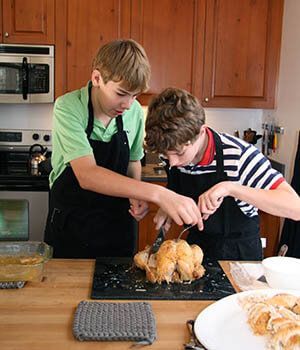
Elementary aged children often love to help with decorating the house. My mother used to put me in charge of creating decorations for the dinner table, for instance. We would collect a pile of cardboard, colored construction paper, colored pencils, markers, glue and tape. Our own two children once made an entire set of chairs and a table one inch high out of brown construction paper, complete with miniature plates, and everything they imagined the first peoples in America to celebrate their harvests may have had at their feasts. This was our centerpiece on the Thanksgiving table. At Christmas, they would make decorations again, and make personalized creations for each table guest.
Children under the age of six are wonderful sous-chefs. They can help to wash or chop food, shuck corn or pull the ends off green beans, and scrub potatoes. They may be helpful in bringing out the pots and pans you ask for, line them up on the counter in the order of use, clean them in the sink when cooled, and collect the odds and ends that are needed for the meal, like mixing bowls, wooden spoons, timers, or meat thermometers.
The point is to give them things to do and include them in holiday family traditions whenever they are around. If they participate in the kitchen, they are building memories with you; if they wander off, just enjoy your peaceful time alone! Invite your children with a welcoming spirit. If you are relaxed and enjoying your own time in the kitchen, your children will internalize that preparing this meal is a special tradition.
Keep Holiday Family Traditions Simple
With
infants and little children, it is the awe, the wonder, and the magical feelings of peace and of closeness with others that will imprint on their little souls. Keep this in mind: less is more.
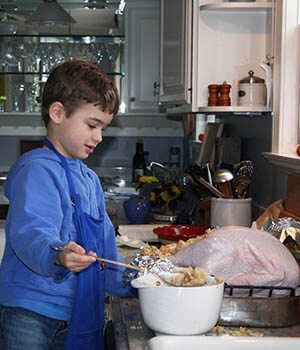
They will get more out of a cup of hot chocolate on the couch with you after a walk in the snow than many of the hyped-up activities we think we “should” drag them around to! I used to love sitting on the couch and reading the beautiful Christmas picture books we had collected over the years as a family. Even elementary-aged children love to revisit their old favorites. Some families enjoy re-reading Dickens’s A Christmas Carol each year to the elementary-aged children and adolescents, or bundling up for a morning walk on the vacation days. Whether it be playing music through the house or lighting candles in the evening, do so with the intent to slow down and savor the moments.
Gifts and Presents
When it comes to giving, many families have found pleasant ways to include their children in preparing food for others or serving someone in need. If you are purchasing gifts for your children, take into account their developmental needs and interests, and again, the most meaningful gifts are often the most simple. To help you in your quest to find useful and meaningful gifts for Montessori children, see the following suggestions made by our Forest Bluff Directors, and remember that less really IS more when it comes to meaningful gift giving!
Young Children's Community (Ages 15 months - 3 years)
- Books (YCC booklist)
- Ride-on toys
- Magnetic blocks
- Wooden toys
- Blocks
- Push wagon
- Brio Train set
- Shape sorters
- Stamps w/ink
- Wooden puzzles w/small knobs and realistic images
- Glue Stick
- Crayon Rocks
- Children's scissors
- Stacking boxes
- Nesting bowls
- Simple jigsaw puzzles
- Bead stringing
- Tableware
- Cleaning tools (broom, mop, apron, Swiffer, etc.)
- Ironing board (child-sized) w/travel size iron
Primary (Ages 3 - 6 years)
- Books (Primary Level booklist)
- Schleich animals
- Wooden doll house
- Tea set
- Dress-up materials
- Magnetic blocks
- Wooden blocks (large set)
- Marble mazes
- Tinker Toys
- Lincoln logs (classic wood)
- Magna-tiles
- Board games
- Shut-the-Box (game)
- Color Connect (game)
- Simple memory games
- Puzzles (24-200 pieces)
- Tangram Set
- Color Cube
- Terrarium
- Cooking utensils (child size)
- Magnifying glass
- Globe
- Paper dolls
- Colored pencils (high quality)
Elementary (ages 6 - 12 years)
- Books (Elementary Level booklist)
- Atlas of history
- No Checkmate (Montessori version!)
- Chess set
- Four in a Row (game)
- Mastermind (game)
- Compass
- Binoculars
- Microscope
- Chemistry set
- Reading lamp
- Journal/diary
- Office supplies
- Desk
- Calligraphy set
- Scrapbook
- Acrylic paint set
- Origami
- Spirograph
- Model kits
- Project Materials (cardboard, duct tape, etc.)
- Carpentry equipment
- Tool Box Set
- Globe/Atlas
- Starfinder
- Telescope
- Kinex
- Erector set
- Snap Circuits Jr (or Pro)
- Circuit board
- Sewing Box
- Knitting set (needles, yarn, patterns)
- Needlepoint
- How-to books (knots, Morse code)
- Cookbook
- Plants/animals to care for
- Gardening tools (shovel, work gloves etc)
- Sports equipment (roller skates, fishing pole, archery, baseball, sled, ice skates, cross country skis, etc.)
- Skating, swimming, violin, etc.
Secondary (ages 12 - 14 years)
- Books (Secondary Level booklist)
- Biographies and science books such as The Innovators by Walter
- Isaacson
- Guidebook for your local city
- Board games (adult level)
- Cards (and a book of card games)
- Jigsaw puzzles (1000 pieces)
- Local topographic map
- Historical map (of your town or region)
- Paint supplies (acrylics, brushes, canvas)
- Sketching Set (pencils, charcoal etc)
- Sewing box
- Sewing machine
- Needlepoint
- Wood carving (whittling knife etc)
- Saw/mitre box
- Models (more intricate)
- Orienteering books/compass
- Snow shoes
- Winter goggles
- Sleeping bag
- Camping backpack
- Headlamp
- Pocket knife
- Camera
- Membership (Botanic Garden, Museums, etc.)
For all Ages
- Bird feeder
- Craft (embroidery, sewing, etc.)
- Art materials (quality)
- Musical instruments (with quality sound)
- Trip to farm/historical site/museum
- Magazines (National Geographic, Cooks Illustrated, Smithsonian, Scientific American, Chicago Wilderness)
- Tickets to play/musical/concert/sporting event (Don’t forget about local high school or college performances!)

